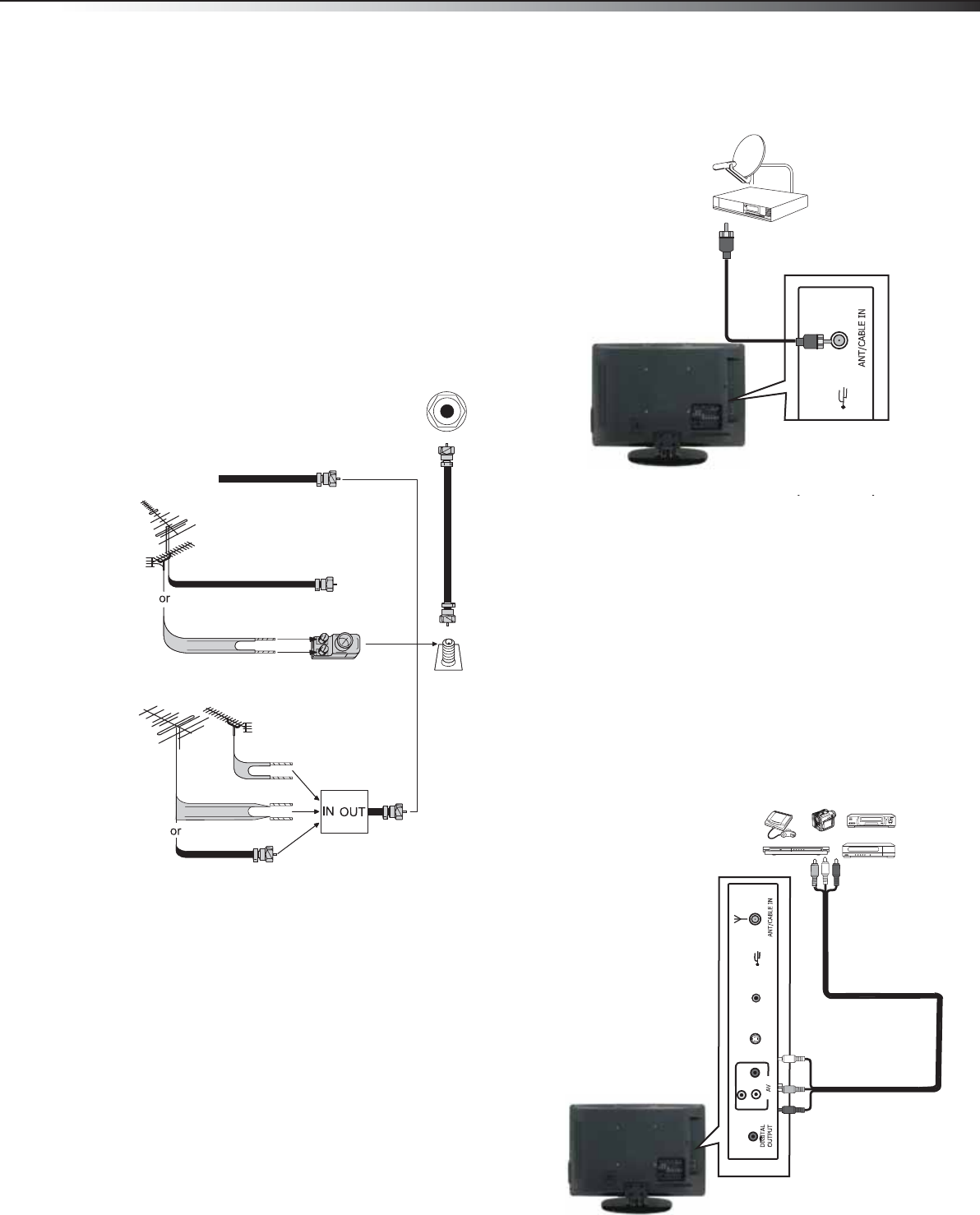
Making connections
9
DX-32L130A10
Connecting an antenna, cable TV, or
satellite TV box
Important: The antenna connector should only be
finger-tightened. Do not tighten this connector with any
tool, or you may damage your TV.
To connect an antenna, cable TV, or satellite TV box:
1 Turn off the TV before connecting the antenna.
2 Connect one end of a coaxial cable (not
included) to the RF OUT jack on the antenna or
on the cable or satellite TV box. If you are using
an antenna with twin-lead cable, you may need
a 300-75 ohm adapter (not provided) to
connect it to the back of your TV. Likewise, if
you are using several antennas, you may need a
combiner (not provided).
3 Connect the other end of the cable to the
ANT/CABLE IN jack on the side of your TV.
Notes:
Use a coaxial cable to eliminate interference and noise from
radio waves.
Do not bundle the coaxial cable with the power cord or other
cables.
If the antenna is not installed correctly, contact qualified
service personnel to correct the problem.
Connecting a VCR
To connect a VCR:
1 Make sure that your TV’s power cord is
unplugged and the VCR is turned off.
2 Connect an AV cable to the AV VIDEO and
AUDIO out jacks on the VCR.
Home antenna
terminal (75 ohm
)
ANT/CABLE IN jack (on
the side of the TV)
Twin-lead flat cable
RF coaxial cable (75 ohm)
RF coaxial cable (75 ohm)
RF coaxial cable (75 ohm)
RF coaxial cable (75 ohm)
Twin-lead flat cable
Combiner (not provided)
300-75 ohm Adapter
(not provided)
VHF antenna
UHF antenna
VHF, UHF, or
combination
antenna
HEADPHONE
S
ERVIC
E
Antenna, cable
TV, or satellite box
Side of TV
L
R
VIDEO
S-V
I
DEO H
EA
DPHONE
SERVI
C
E
Side of TV
AV cable
Note: Cables are often
color-coded to connectors.
Connect yellow to yellow,
red to red, and white to
white. Cables may be
separate or combined.
DX-L32L130A10_09-0617_MAN_ENG_V1.book Page 9 Thursday, July 30, 2009 2:41 PM


















